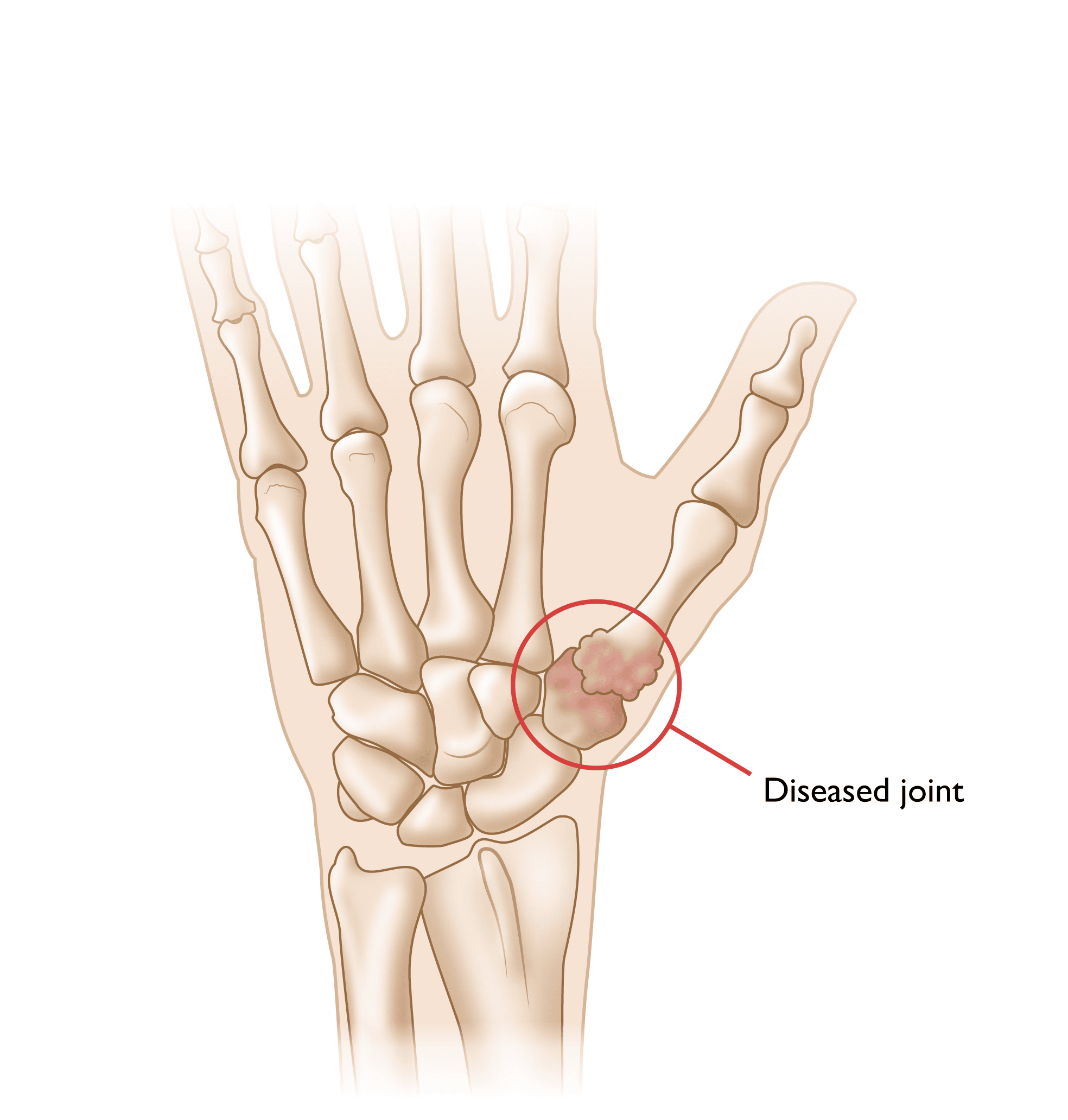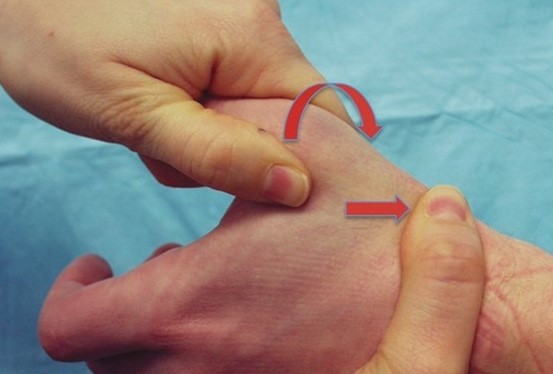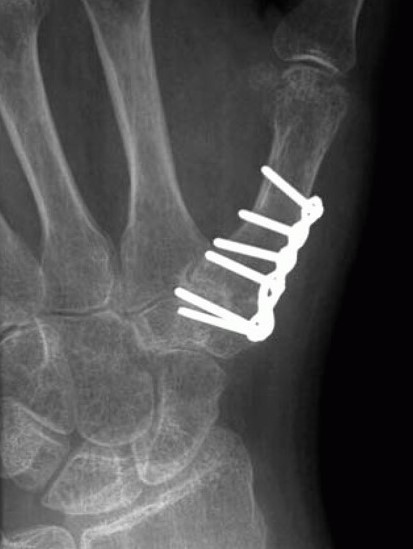Diseases & Conditions
Arthritis of the Thumb
Arthritis is a condition that affects joints, ultimately resulting in wearing out of the protective cartilage joint surface. In the thumb, the most common site for arthritis to develop is in the basal joint at the base of the thumb — also known as the thumb carpometacarpal (CMC) joint.
Although there are several types of arthritis, the one that most often affects the basal joint is osteoarthritis (degenerative, or wear-and-tear, arthritis).
Description
Smooth cartilage covers the ends of the bones. It enables the bones to glide easily in the joint. Without it, bones rub against each other, causing friction and damage. Osteoarthritis occurs when the cartilage begins to wear away, typically due to age and use.
The basal joint at the base of the thumb — or thumb CMC joint — is located near the wrist and at the fleshy part of the thumb. It enables the thumb to swivel, pivot, and pinch so that you can grip things in your hand. This joint is highly vulnerable to arthritis as people age.
Arthritis of the base of the thumb is more common in women than in men, and usually occurs after 40 years of age. Prior fractures or other injuries to the joint may increase the likelihood of developing this condition.
Symptoms
- Pain with activities that involve gripping or pinching, such as turning a key, opening a door, or snapping your fingers
- Loss of strength in gripping or pinching activities
- Swelling and tenderness at the base of the thumb
- Aching discomfort after prolonged use of the thumb
- An enlarged, "out-of-joint" appearance at the base of the thumb
- Development of a bony prominence or bump over the basal joint at the base of the thumb
- Limited motion in the thumb
Doctor Examination
Your doctor will:
- Ask you about your symptoms, any prior hand or thumb injury, pain patterns, and/or activities that aggravate the condition.
- Examine your hand and thumb. One of the tests used during the examination involves holding the joint firmly while moving the thumb. If this results in pain, a gritty feeling, or a grinding sound (crepitus), arthritis of the joint is suspected.
An X-ray may show deterioration of the joint, including narrowing of the joint space and formation of bone spurs.
Many people with arthritis at the base of the thumb also have symptoms of carpal tunnel syndrome, so your doctor may check for that, as well.
Treatment
Nonsurgical Treatment
In its early stages, arthritis at the base of the thumb will respond to nonsurgical treatment.
- Ice the joint for 5 to 15 minutes several times a day.
- Take an anti-inflammatory medication, such as aspirin or ibuprofen, to help reduce inflammation and swelling.
- Wear a supportive splint to limit the movement of your thumb and allow the joint to rest. The splint may protect both the wrist and the thumb. It may be worn overnight or from time to time during the day.
Because arthritis is a progressive, degenerative disease, the condition may worsen over time. The next phase in treatment involves injecting a steroid solution directly into the joint. This will usually provide relief for several months. However, these injections cannot be repeated indefinitely and may become less effective over time.
Surgical Treatment
When nonsurgical treatment is no longer effective, surgery is an option. The operation can be performed on an outpatient basis, and several different procedures can be used.
- One option involves fusing the bones of the joint together. This reduces pain and allows for a strong pinch; however, it will limit movement of the thumb.
- Thumb CMC arthroplasty. Another option is to remove part of the joint and suspend the remaining thumb using a tendon in your wrist or a medical device. This procedure alleviates pain and allows for continued motion of the thumb.
You and your physician will discuss the options and select the one that is best for you.
Rehabilitation
After surgery, you will likely have to wear a cast or splint for 4 to 8 weeks, depending on which procedure you have.
A rehabilitation program, often involving a therapist, will help you regain movement and strength in your hand. You may feel some discomfort during the initial stages of the rehabilitation program, but this will lessen over time.
Full recovery from surgery takes several months. Most patients are eventually able to resume normal activities.
Outcomes
Basal joint arthritis, or thumb CMC arthritis, is a very treatable condition, and many patients are satisfied with their outcome after treatment. Patients who don't achieve relief with nonsurgical treatment very often have a good result after surgery.
Contributed and/or Updated by
Peer-Reviewed by
AAOS does not endorse any treatments, procedures, products, or physicians referenced herein. This information is provided as an educational service and is not intended to serve as medical advice. Anyone seeking specific orthopaedic advice or assistance should consult his or her orthopaedic surgeon, or locate one in your area through the AAOS Find an Orthopaedist program on this website.









